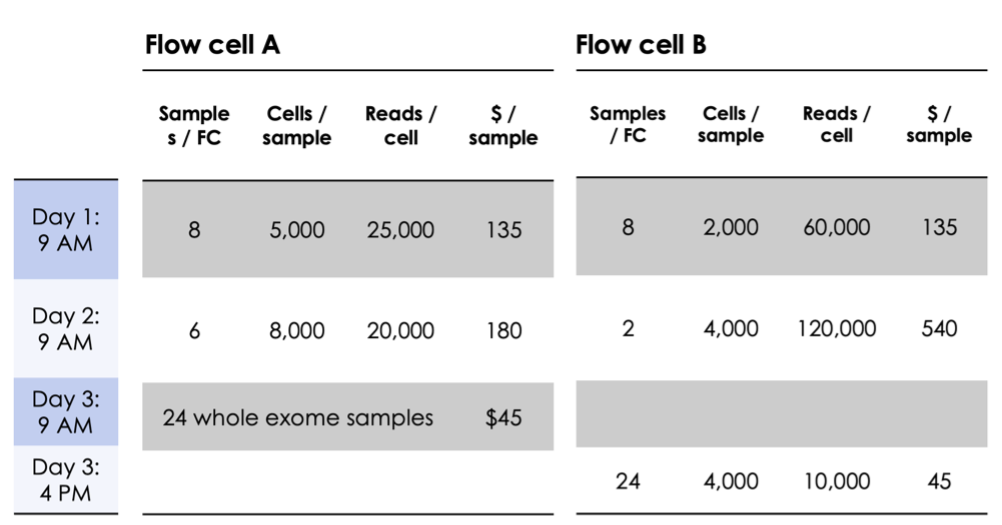Single-cell sequencing and the Element AVITI™ System: a perfect pairing
Sign up for our newsletter
Join our scientific community to stay up to date with Element news, insights, and product updates.
This site is protected by reCAPTCHA and the Google Privacy Policy and Terms of Service apply.
Single-cell sequencing is a powerful technique for revealing hidden complexity within cell populations. The technique has found widespread adoption in fields such as immunology, neuroscience, developmental biology, and cancer research, where small populations of cells with unique gene expression profiles can have profound impacts on entire systems. In single-cell experiments, it is important to choose tools that work together efficiently and cost-effectively to enable the in-depth analysis often needed to generate new insights into human disease or identify new targets for therapeutic interventions. Single-cell sequencing requires at least two paired tools: a system for attaching barcodes to RNA by cell of origin and a DNA sequencing platform to read out the tagged gene expression data.

Choosing a single-cell barcoding platform
Today, scientists have multiple options for efficient cellular barcoding of RNA. All single-cell platforms pursue a basic strategy of isolating and lysing individual cells, then applying reverse transcription to generate cDNA while adding a cell-specific barcode and often a molecule-specific UMI. After barcoding, cDNA from the processed cells is pooled for NGS library preparation and sequencing. The details of the general strategy vary by platform, resulting in differing strengths and limitations. The two most commercially established platforms are the 10X Genomics Chromium and the BD Rhapsody.
The 10X Genomics Chromium System isolates individual cells within nanoliter-scale Gel-In-Bead Emulsions using a microfluidics system. Each droplet contains, ideally, one cell and one bead decorated with many copies of a single barcode. The droplets serve as reaction chambers for reverse transcription (RT).
The BD Rhapsody isolates cells in picoliter wells using gravity deposition. A combinatorial library of barcode-carrying magnetic mRNA-capture beads, sized to optimize the deposition of a single bead per well, is delivered via microfluidics. Once cells are lysed, mRNA binds to the beads and the beads are pooled for barcoding and reverse transcription steps.
Both systems are high-throughput, have similar runtimes, and similar cost per cell for a standard gene expression assay. The 10X Chromium is widely available, simple to use, and provides the largest menu of supported assays. The BD Rhapsody has gentler cell handling, a lower multiplet rate, and the ability to QC runs before investing in sequencing. With differing advantages, the decision on which platform to use will depend on a range of investigator and experiment specific factors.
Simplify your single-cell sequencing logistics
The sequencing portion of the single-cell workflow is an important factor in the success of the overall experiment as systems vary significantly in quality, flexibility, turnaround time, and of course cost. The AVITI DNA sequencing system fits ideally within the workflow requirements of the leading single-cell technologies.
- Element is a validated partner for both the 10X Genomics and BD Rhapsody systems.
- The AVITI System throughput aligns neatly with sample outputs from both leading and emerging single-cell technologies.
- High sequencing quality assures assay sensitivity to low expressed genes and high yield of genes per barcode.
- Two fully independent 1 billion-read flow cells enable multiple independent run-starts daily for unrivaled sequencer access.
- Industry leading cost of $0.60 - $1 per million reads and guaranteed reagent costs for the life of your instrument lets you do more science for your budget.
Platform flexibility is also important. But what is meant by flexibility? A flexible system can accommodate the varying throughput requirements of an ever-widening range of single-cell assays. With partitioned flow cells, cell numbers and read depth requirements may not fit neatly into strictly bucketed lanes, leading to Tetris-like sample planning and inefficient usage that increases per cell costs.

Flexibility can also mean the ability to run on-demand in a shared system environment. Indeed, one of the primary draws of a benchtop system is avoiding the delays associated with queueing for ultrahigh-throughput, batched runs. Unlike other benchtop platforms, the AVITI System’s dual flow cells can be run completely independently, enabling multiple run-starts daily and minimizing the need to coordinate schedules across end users. Flexibility is only meaningful if it simplifies your workflow or translates into cost or time savings.
At Element, we want to make it easier for scientists to explore their curiosity by putting them in control of their budget and their timelines. For more information on how AVITI can accelerate your single-cell research, watch our on demand webinar with 10x Genomics or fill in the form to talk to an Element scientist.